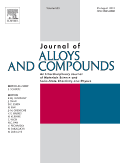
Journal of Alloys and Compounds
Scope & Guideline
Connecting Research and Application in Materials Science
Introduction
Aims and Scopes
- Materials Science and Engineering:
The journal focuses on the design, synthesis, and engineering of advanced materials, particularly alloys and compounds, to enhance their performance in various applications. - Characterization Techniques:
Papers often utilize advanced characterization methods such as X-ray diffraction, electron microscopy, and spectroscopy to elucidate the structural, optical, and magnetic properties of materials. - Energy Storage and Conversion:
There is a significant emphasis on the development of materials for energy storage and conversion, including lithium-ion batteries, supercapacitors, and photocatalysts for hydrogen evolution and CO2 reduction. - Biocompatibility and Biomedical Applications:
Research related to biocompatible materials and their applications in biomedical fields, including implants and drug delivery systems, is well represented. - Thermal and Mechanical Properties:
The journal publishes studies on the thermal and mechanical properties of materials, particularly under extreme conditions, focusing on their applications in aerospace, automotive, and structural engineering. - Sustainable Materials and Green Chemistry:
Research on sustainable materials, recycling processes, and environmentally friendly synthesis methods is increasingly prominent, reflecting the journal's commitment to addressing global challenges.
Trending and Emerging
- High-Entropy Alloys (HEAs):
Research on HEAs has surged, focusing on their unique mechanical properties, corrosion resistance, and potential applications in extreme environments, driven by their compositional complexity. - Nanostructured Materials:
There is an increasing interest in nanostructured materials, particularly in the context of energy storage and conversion, where nanostructuring is used to enhance electrochemical performance. - 2D Materials and Heterostructures:
The exploration of two-dimensional materials, such as MXenes and transition metal dichalcogenides, is on the rise, particularly for their applications in electronics and catalysis. - Sustainable and Green Materials:
Research focused on sustainable materials, including biodegradable alloys and green synthesis methods, is gaining momentum, reflecting a broader trend towards environmentally friendly technologies. - Machine Learning in Materials Science:
The integration of machine learning and artificial intelligence in materials design and discovery is a rapidly emerging theme, with researchers leveraging these tools for predictive modeling and optimization.
Declining or Waning
- Traditional Alloy Systems:
There has been a noticeable decline in research focused on conventional alloy systems such as Al-Cu or Fe-Cu, as attention shifts towards high-entropy alloys and novel composite materials. - Basic Thermodynamics of Alloys:
Studies solely focused on the thermodynamic properties of traditional alloys are becoming less frequent, with researchers now integrating these studies with advanced computational models and machine learning techniques. - Low-Temperature Superconductors:
Research on low-temperature superconductors has diminished, likely due to the emergence of new materials and technologies that offer better performance at higher temperatures. - Single-Phase Metal Oxides:
The focus on single-phase metal oxides for photocatalytic applications has waned as researchers increasingly explore heterojunctions and composite systems that demonstrate superior performance.
Similar Journals
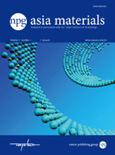
NPG Asia Materials
Elevating the Discourse on Material Properties and InnovationsNPG Asia Materials, a premier journal published by NATURE PORTFOLIO, stands at the forefront of research in the fields of condensed matter physics, materials science, and modeling and simulation. With an impressive Impact Factor gracing its Q1 rankings in 2023, this open-access journal, established in 2012, offers a vital platform for disseminating high-quality research articles, reviews, and perspectives that advance the understanding of material properties and innovative applications. Based in the United States and catering to a global audience, NPG Asia Materials features cutting-edge contributions that not only enhance academic scholarship but also provoke discussions relevant to both industry and academia. Researchers, professionals, and students are invited to explore its extensive archive of work, covering insights from 2009 to 2024, in a bid to stay abreast of the latest developments in these rapidly evolving scientific domains.

Metallurgical Research & Technology
Exploring the forefront of materials science and engineering.Metallurgical Research & Technology is a distinguished journal published by EDP SCIENCES S A based in France, focusing on the dynamic field of metallurgical science and engineering. With a strong emphasis on the latest advancements in Materials Chemistry, Computational Mechanics, and Mechanics of Materials, this journal aims to provide a platform for researchers to share innovative findings that propel the field forward. As of 2023, it has secured a commendable position in various categories, including Q3 rankings in Computational Mechanics, Materials Chemistry, and Mechanics of Materials, along with a Q2 ranking in Metals and Alloys. The journal actively promotes open access, facilitating broader dissemination of critical research across the globe. Researchers, professionals, and students in the metallurgical domain will find Metallurgical Research & Technology an invaluable resource for cutting-edge developments and collaborative opportunities.
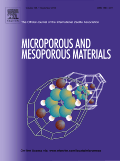
Microporous and Mesoporous Materials
Fostering Breakthroughs in Nanoscience and EngineeringMicroporous and Mesoporous Materials is a leading academic journal published by ELSEVIER, specializing in the field of porosity characterization and applications of microporous and mesoporous materials. With an impactful Q1 ranking in various categories, including Chemistry, Condensed Matter Physics, and Materials Science, this journal serves as a vital resource for researchers, professionals, and students focused on advancing the understanding and application of these materials. Established in 1998 and set to continue its influence until 2024, the journal's rigorous peer-review process ensures the dissemination of high-quality research findings. Additionally, its commitment to open access publishing broadens accessibility, fostering an inclusive community dedicated to innovation in nanoscience, materials physics, and engineering. The journal's Scopus rankings highlight its prestigious standing, placing it among the top percentile within pertinent fields. For those engaged in cutting-edge research or education within these sectors, Microporous and Mesoporous Materials remains an essential journal for current advancements and insights.
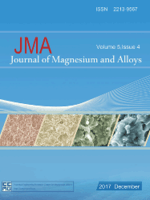
Journal of Magnesium and Alloys
Elevating Knowledge in Magnesium and AlloysThe Journal of Magnesium and Alloys is a prestigious, peer-reviewed academic publication dedicated to advancing the field of materials science, particularly focusing on magnesium and its alloys. Published by KEAI PUBLISHING LTD since 2013, this Open Access journal enables unrestricted dissemination of research findings, enhancing global collaboration among researchers, professionals, and students. With an ISSN of 2213-9567 and a significant impact factor, it has established itself in the upper quartiles (Q1) of both the Mechanics of Materials and Metals and Alloys categories, ranking #3 out of 176 and #9 out of 398 respectively according to Scopus. The journal aims to provide a forum for the latest advances in the understanding, production, and application of magnesium alloys, fostering innovation and sustainable practices within the materials engineering community. Based in Beijing, China, the journal is committed to bridging gaps in current knowledge and driving future research directions through its high-quality publications.

Uspekhi Fiziki Metallov-Progress in Physics of Metals
Pioneering Research in the Physics of MetalsUspekhi Fiziki Metallov - Progress in Physics of Metals, published by the G V KURDYUMOV INST METAL PHYSICS NAS UKRAINE, is a distinguished open-access journal that has been advancing the field of metal physics since 2000. With an ISSN of 1608-1021 and E-ISSN of 2617-0795, this journal is pivotal for disseminating rigorous research findings and innovations across diverse subfields including Condensed Matter Physics, Electronic, Optical and Magnetic Materials, and Fluid Flow and Transfer Processes. The journal's strong impact, reflected in its Q2 and Q3 quartile rankings across several categories and a commendable Scopus ranking, places it at the forefront of materials science and engineering. Researchers, professionals, and students can benefit from its rich repository of high-quality articles aimed at fostering knowledge and collaboration in metal physics. With an accessible repository and commitment to the open-access model, Progress in Physics of Metals strives to make significant contributions to the global scientific community, shaping the future of metal-based research.

University Politehnica of Bucharest Scientific Bulletin Series B-Chemistry and Materials Science
Empowering Scholars, Shaping the Future of ScienceUniversity Politehnica of Bucharest Scientific Bulletin Series B-Chemistry and Materials Science is a renowned academic journal published by POLYTECHNIC UNIV BUCHAREST, situated in Romania. With the ISSN 1454-2331, this journal serves as a dynamic platform for the dissemination of innovative research findings in the fields of chemistry and materials science. Although classified in the Q4 quartile of both Chemistry (miscellaneous) and Materials Science (miscellaneous) categories for 2023, it has made a significant impact by providing a venue for emerging scholars and established researchers alike to share their work. The journal seeks to bridge theoretical insights and practical applications, promoting interdisciplinary dialogue and advancing scientific understanding. The scope encompasses a broad range of topics, reflecting contemporary advancements and challenges within the field. To facilitate access to its articles, while it does not currently operate under an open-access model, the journal remains committed to enhancing visibility through digital libraries. With a publication history spanning from 1999 to 2024, the journal is vital for all stakeholders—researchers, professionals, and students—seeking to stay abreast of developments in chemistry and materials science.
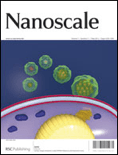
Nanoscale
Connecting Global Minds in Nanoscience.Nanoscale is a premier academic journal published by the Royal Society of Chemistry, dedicated to advancing the field of nanoscience and nanotechnology. With both its ISSN (2040-3364) and E-ISSN (2040-3372) ensuring wide accessibility, the journal is renowned for its high-impact research contributions, reflected in its impressive 2023 Impact Factor and prestigious Q1 ranking in both Materials Science (Miscellaneous) and Nanoscience and Nanotechnology categories. Since its inception in 2009, Nanoscale has fostered a collaborative platform where leading researchers from around the globe share their innovative findings across a multitude of topics spanning from material synthesis to applications in nanotechnology. The journal not only serves as a valuable resource for professionals, researchers, and students but also actively engages the academic community in discussing emerging trends, thus shaping the future of nanoscience. Situated in the heart of the UK at Thomas Graham House, Science Park, Milton Rd, Cambridge CB4 0WF, Nanoscale remains a key publication for those looking to keep abreast of the latest breakthroughs in an ever-evolving field.

Crystals is a premier open-access journal, published by MDPI since 2011, that focuses on the multidisciplinary fields of chemical engineering, condensed matter physics, inorganic chemistry, and materials science. With its E-ISSN 2073-4352, the journal is headquartered in Switzerland, and actively contributes to the global scientific community by facilitating the dissemination of high-quality research. Ranking in the Q2 quartile across multiple categories, including Chemical Engineering (miscellaneous) and Materials Science (miscellaneous) for 2023, Crystals provides a platform for innovative studies that span from fundamental research to practical applications. The journal's commitment to open access ensures that groundbreaking findings are readily available to researchers, professionals, and students alike, fostering an environment of collaboration and knowledge sharing that is essential in advancing the scientific understanding of crystalline materials.

Materials Letters-X
Empowering Global Access to Cutting-Edge ResearchMaterials Letters-X, published by ELSEVIER, is an esteemed open-access journal dedicated to the rapid communication of research in the fields of Condensed Matter Physics, Materials Science, Mechanical Engineering, and Mechanics of Materials. Launched in 2019, this journal has quickly established itself within the academic community, achieving Q3 quartile rankings in several categories according to the 2023 metrics. The journal's impactful contributions are reflected in its Scopus rankings, notably within Mechanical Engineering (Rank #308) and Mechanics of Materials (Rank #199). The open-access model promotes widespread dissemination and accessibility, ensuring that cutting-edge advancements in material science are readily available to researchers, professionals, and students worldwide. As it continues to grow, Materials Letters-X aims to inspire innovation and collaboration across disciplines, making it a pivotal resource for those engaged in material research and applications.

Acta Metallurgica Slovaca
Advancing metallurgical knowledge for a sustainable future.Acta Metallurgica Slovaca is a distinguished open-access journal published by SCICELL SRO that has been pivotal in the field of Materials Science and Metallurgy since its inception. With a robust commitment to disseminating high-quality research, this journal covers a wide array of topics within the scope of metals and alloys. Now indexed in Scopus, it ranks 82nd out of 176 in its category, reflecting a growing influence within the scientific community. With a quartile ranking of Q3 as of 2023, Acta Metallurgica Slovaca serves as an essential platform for researchers and professionals seeking to share innovative findings and developments in metallurgical science. Open access since 2013, it ensures that research is accessible to all, fostering collaboration and engagement across academia and industry worldwide. With a converged publication timeline extending from 2009 to 2024, this journal continues to play a crucial role in advancing knowledge and addressing contemporary challenges in the metallurgy sector.